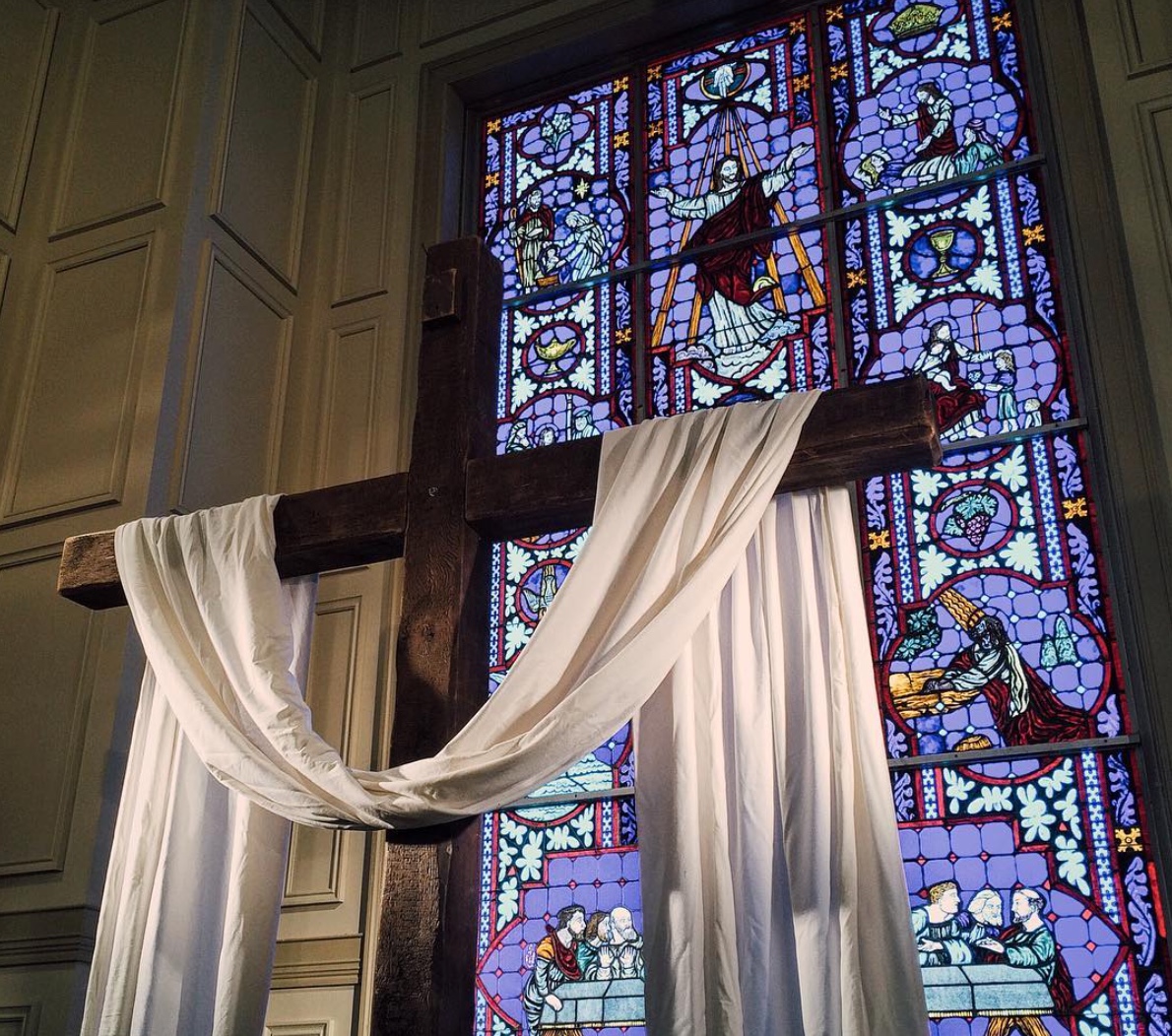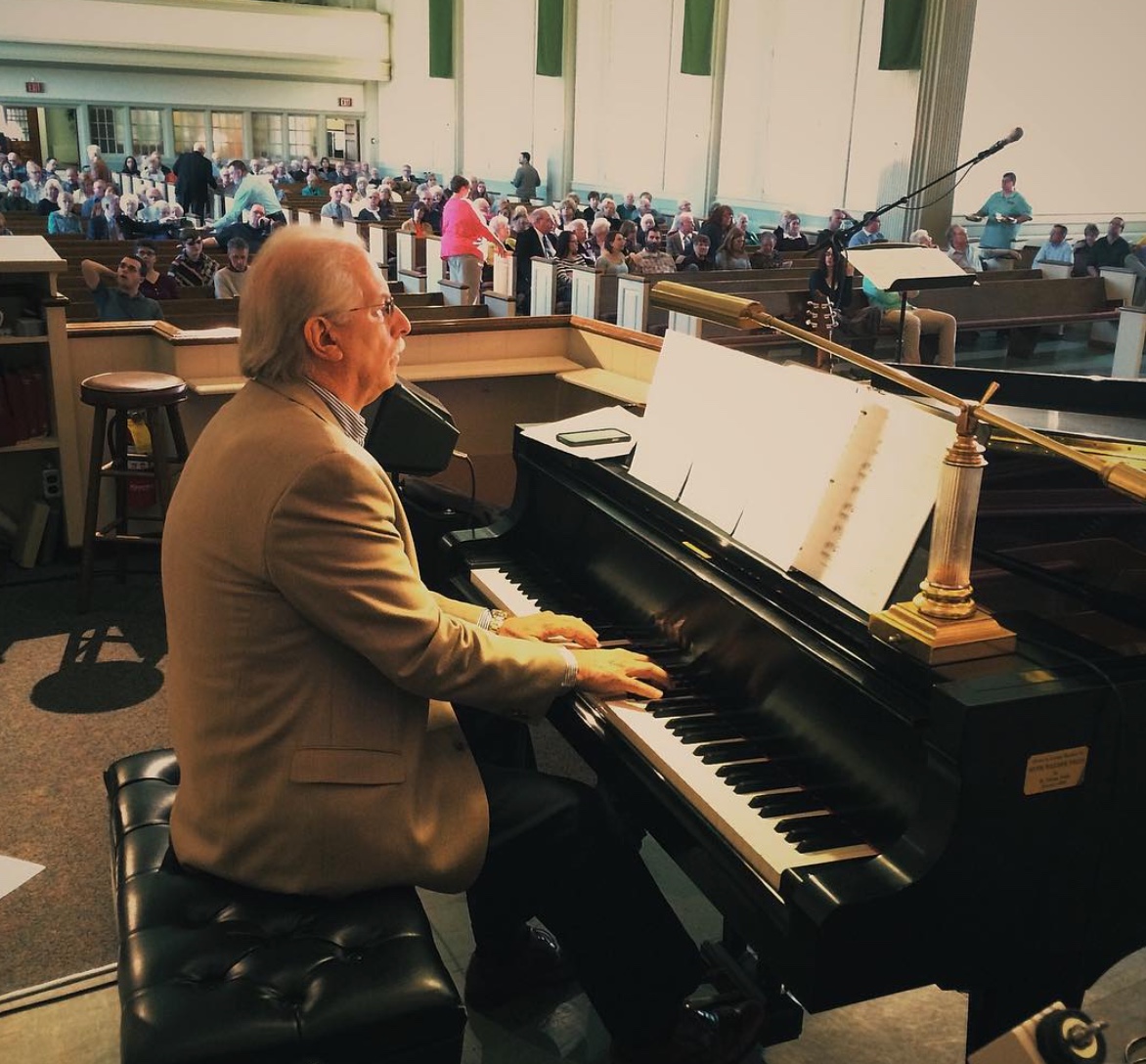Images from https://www.instagram.com/parkplacechog/
Hand in hand, the arts and worship are partners from the beginning. The first sign of this duet is seen in the Creator’s six-day rampage of creative artistry of millennia past. That initial creative surge is still thriving and renewing itself today. The final chapters of Genesis are jammed with color, texture and design as the Israelites are given intricate instruction on how to create the beautiful tabernacle space where the sovereign would be worshiped. Through the ages the arts have been born through faith communities. From the early Christian hymn “Let this mind be in you… (Phil 2:5a KJV),” to the Gregorian Chant of the Middle Ages, to the unparalleled creations of Johann Sebastian Bach, to Michelangelo’s Sistine Chapel, to Rembrandt’s Return of the Prodigal Son, the arts’ historical center in partnership with worship is well-established.
There have been twentieth-century ebbs in this natural God-breathed partnership. The post-modern church can be either a casual consumer of occasional artistic expression or an active sanctuary where the arts can be nurtured and unleashed into a hurting world with a provocative, transforming voice. I prefer the latter!
Connect with your people, share your story, listen to their stories and allow the Spirit’s creative power to lead. As post-modern worship leaders we need to engage, first, with our people to effectively incorporate the arts in worship. Before song choice, film medium, dance expression, paint and sculpting, the people with whom we worship, with whom we seek to engage in worship, are primary. All artistic expressions emerge from connection with our people, those within the fellowship of believers and those who are outside our doors in need of the love of the good and loving God. When I/we spend time around the table with the people with whom I/we worship, stories emerge and creativity soars beyond any imagination I/we can stir up on our own.
Create out of story. Know your own story and find ways to give it expression through song, painting, dance, film and writing. In this way, you are modeling for other artists within the community. Learn the stories of the artists with whom you engage. Create an environment that encourages and supports creative expression. Provide seasonal questions and invite artists to respond through their own creative medium. “How does the Creator speak through the natural change of seasons: spring’s new growth, summer’s ripe fruit, autumn’s beauty in letting go, winter’s stark silence?” “How does the child, Jesus, who was born in a feeding trough to become the Bread of Life speak to a world in need of Food Security?” “How does my own story intersect with the poverty of the child born in Bethlehem? Of the Prince of Peace in his majesty?”
Plan for the artists’ work to be displayed or performed as a culmination of the creative process. Use language that helps persons to explore their artistic self. Worship leaders can empower children, students and adults as we call out the artistic gift that we see in them: painters, dancers, poets, builders, singers, songwriters, instrumentalists, photographers, seamstresses, cooks, designers and writers. Generously nurture artistic gifts with your verbal affirmation and consistent planned times for participatory creative endeavors.
Provide a balance of artistic performance and interactive arts. The beauty of a gifted vocalist singing a wonderful melody with a thoughtful lyric is a greatly treasured expression of creativity. The work of a gifted artist who paints with skill and insight is a wonder and invites many to a greater awareness of God. The provocative slam poet challenges and invokes within us a response to action and change. The graffiti artist engages an earthy reality within us asking us to come out of our safe spaces and stir hope and comfort into a real, sometimes very harsh world. All of these gifts can be acts of worship where the skilled hand, voice, mind can call dynamically into the worshiper’s heart and mind. Balance these expressions by skilled artists with opportunities for everyone, the emerging artists, to participate in worship through the arts.
Signal to your gathering, “We are all a part of this community!” “Every voice is valued and contributes to the beauty of the community.” Consistently offer opportunities for everyone to participate. 1) Create response altars with easels draped with fabric. Provide colored markers in small boxes around the easels for worshipers to use in drawing an image, a phrase, or words as a response to a scripture or the message for the day. 2) Provide post-it notes and pens for persons to use in response to a challenge in worship. Then, invite them to bring their creation to an altar space, a bench or window ledge as a symbolic act of commitment. 3) Have a Spring and Advent piano, guitar, or other instrumental playing opportunity. Invite one or two instrumentalists with some proficiency to play as people gather for worship each week. Allow the instrumentalists to choose their own song sets including both sacred and secular music with meaningful word value. This can easily include a broader skill range than instrumentalists who may be playing in a worship service. 4) Engage a person with skills using camera or video (this can be done very proficiently with a smart phone) to film or take shots of a group of children, students or adults responding to a question that is relevant to an upcoming message series. If you are doing this with children it will be important that you get permission from a parent or caregiver to film and use the footage publicly. 5) Invite worshipers to tell their own story through film. It will be important to provide parameters for appropriate sharing both for those sharing and for the hearers.
With any engagement in which the invitation is open to everyone, have specific plans in mind by which everyone’s work will be used or, if it is not used, communicate lovingly with that person about the reason that it was not used. A judgment of quality or artistic preference is not a reason to dismiss a person’s work. The worship leader and the planning team can discern boundaries for appropriate content or sharing. Let’s be cautious to distinguish between “inappropriate” and “uncomfortable” when setting boundaries. Artists are very good at helping us to be “uncomfortable” in appropriate ways that can lead to transformation. Just as the Creator ‘s artistry put all life in motion, the artist in all of us continues to breathe life into our worship.
Recommended Resources:
- The Work of the People, http://www.theworkofthepeople.com Short videos with a wide range of topics to use as an underscore to worship themes, subscription available at a discounted rate
- Worship Together, http://www.worshiptogether.com New songs and worship resource online newsletter
- Conversations: A Forum for Authentic Transformation, “Created to Create” Fall/Winter 2016, Volume 14.2, magazine
- Gifts in Open Hands, Maren Tirabassi and Kathy Wonson Eddy, worship aids for the global community
- Scribbling in the Sand by Michael Card, an artist’s journey
- Walking on Water by Madeleine L’Engle, a classic
- Chasing Francis by Ian Morgan Cron, a novel
- The Practice of the Prophetic Imagination, Walter Brueggemann, preaching in the way of the prophets through dynamic imagery
Submitted by Carma Wood, Associate Pastor of Worship and the Arts
Park Place Church, Anderson, Indiana, November 1, 2016
Carma Wood is a dear friend and former co-worker of mine from Park Place Church of God. She is a skilled musician, lover of people, engaged student, and the best weaver I know. Here's what I mean by that last statement... Carma does an incredible job weaving her understanding of her community with the themes and passions being expressed on a weekly basis. She weaves people together with opportunities to experience grace, community, to serve and to celebrate. She weaves both difficult and joyful occasions together to help people understand the breadth and depth of life moments and experiences. If you had just 15 minutes to sit with Carma, you'd feel right at home and probably start sharing your life as you see her care and vulnerability. It's a joy to call her friend and to invite her to write a bit of what she's learned about the Arts in Worship.








